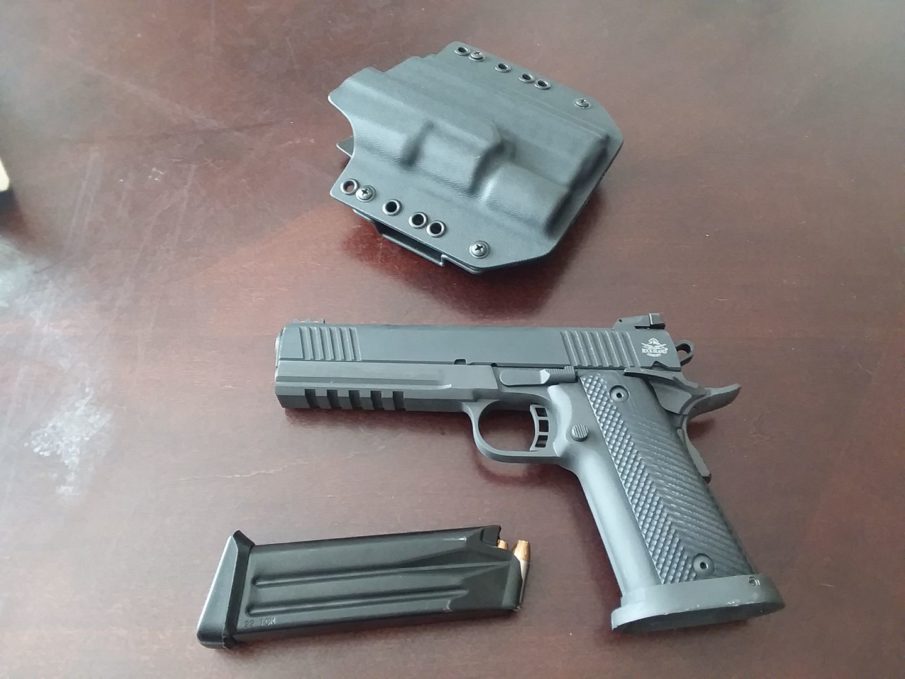Drawing a pistol is an art-form that requires practice to do subconsciously efficient. Every holster and firearms combination is different or has the possibility to be, given the different body types and capabilities of different people. The draw can be done from the same setup a variety of ways depending on the individual’s position as well. There are some general guidelines to cover all of it but for the most part it requires practice and experience. Probably more important is the reason for a draw; physically, situational contextual, existential, etc. all come into play when determining to draw a firearm in a real life scenario.
Above all, drawing a firearms should be a safe and efficient maneuver. Economy of motion should enable a smooth unholstering and target acquisition with the firearm (or blade). Forming a smooth technique here while negating the act of sweeping one’s own body or unintended obstacles is imperative in the prevention of collateral damage. Essentially, the draw should be expedient and direct but the speed and precision of the act will come with practice.
There are a variety of holsters to include ankle or waistline based models and shoulder rigs. Each will require a unique process but there are some synonymous steps that can be taken into consideration for a draw technique. For starters the individual should clear what ever may be obstructing or restricting access to the firearm. Often this is a garment of clothing but can include weapon retention devices or holster safety features. Next a solid purchase on the grip of the weapon should be made before attempting to pull it; this will lay the foundation for a solid overall technique. Then the weapon should be brought to center and lined up with the target before extending it in shot preparation. Line up the sights and you’re good to go.
The thing we forget to consider in training is when we should draw our weapon. Here is where you should learn your use of force laws, rules of engagement procedures, or escalation of force steps in detail. Knowing when you can legally produce a weapon is incredibly important for self preservation. Just as important is knowing when the situation demands the weapon be drawn, body language and situation based external influences may demand it. Every fight is different and should be treated accordingly.
Drawing a weapon should come with the intention to employ it, not as a show of force though that may be an added bonus. The mere introduction of the weapon may de-escalate the situation at hand but should that fail the option to use it should be on speed dial. Remember to train hard and practice routinely should your lifestyle demand everyday carry. Base your actions off the situational demands accordingly and use your brain to make calculated decisions, not brash emotion based reactions.
Already have an account? Sign In
Two ways to continue to read this article.
Subscribe
$1.99
every 4 weeks
- Unlimited access to all articles
- Support independent journalism
- Ad-free reading experience
Subscribe Now
Recurring Monthly. Cancel Anytime.









